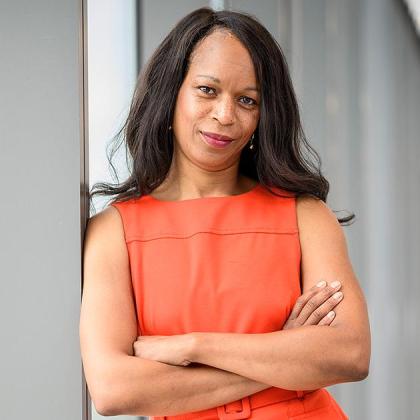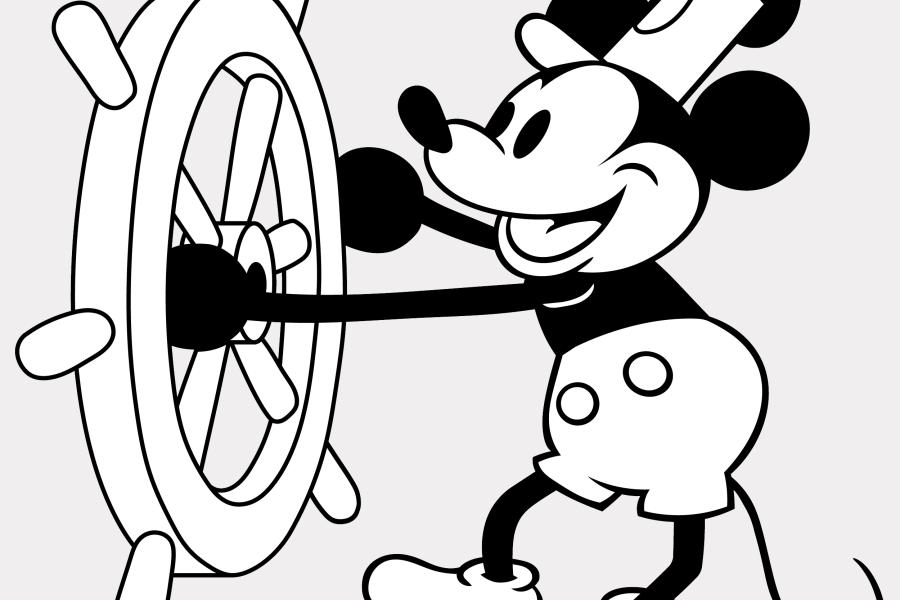Mickey Mouse, one of the most iconic cartoon characters of all time and Walt Disney's most endearing creation, is now in the public domain: The copyright on the landmark animated short Steamboat Willie—the earliest appearance of Mickey Mouse—expired at the start of 2024.
Copyright protects creative works such as books, films, images, and songs from being copied without the permission of the work's creator and copyright holder. Limited exceptions are allowed for "fair use," which covers satire and some educational purposes. U.S. copyright laws grant the creator of content ownership for 95 years, which means famous works eventually enter the public domain. Legally, that means anyone could now copy and reproduce the 1928 version of Mickey Mouse without permission.
Video credit: Walt Disney Animation Studios
Steamboat Willie isn't the first notable work to enter the public domain, nor will it be the last. In 2023 alone, the last stories featuring Sherlock Holmes became available, as did the earliest adventures of the Hardy Boys, and the groundbreaking films Metropolis and The Jazz Singer. The original story of Winnie-the-Pooh, created by English author A. A. Milne and illustrator E. H. Shepard, entered the public domain in 2022. The move effectively ended Disney's exclusive use of the character and led to a low-budget horror movie Winnie the Pooh: Blood and Honey.
For longstanding media companies like Disney and Warner Bros., managing copyrights and preserving the rights to intellectual properties worth billions will continue to be a challenge. In the next decade, early versions of franchise-leading characters such as Superman, Batman, Donald Duck, The Hobbit, and James Bond are all headed into the public domain.
Even with Mickey Mouse in the public domain, don't expect to see a flood of off-brand Mickey Mouse content anytime soon, says Stacey Lee, a professor of practice at the Johns Hopkins Carey Business School and an expert in business law. Lee anticipates Disney will continue fighting to protect its intellectual property as vigorously as ever. As The New York Times reported in December 2022, Disney "once forced a Florida day care center to remove an unauthorized Minnie Mouse mural" and told a stonemason that "carving Winnie-the-Pooh into a child's gravestone would violate its copyright." Even legislation to expand copyright protections in 1998 became known as the "Mickey Mouse Protection Act."
Changing culture
Ironically, Steamboat Willie itself included the song "Turkey in the Straw," which was in the public domain at the time of production. The song, and the short, owe much of their origins to the blackface minstrel shows and racial stereotypes of the late 1800s and early 1900s.

Image caption: Stacey Lee
Over the last several decades, many past works have been reviewed or modified to meet modern cultural sensibilities. In February, Ian Fleming Publications Ltd., the company that owns the literary rights to the James Bond novel series, commissioned a review to remove some racially offensive and misogynistic language from future printings of the works. However, Lee notes that while many may welcome changes, they won't impact or extend the copyright.
"While alterations, adaptations, or derivative works can establish a new copyright, they don't extend the length of the original copyright, which still continues to exist independently," she said. "It's important to note that the new work must contain substantial and original creative content to be distinguished from the original work. Mere modifications or updates usually wouldn't suffice."
How does a company like Disney protect its copyright and intellectual properties?
According to Lee, Disney will have many options for protecting its intellectual property rights to Mickey Mouse. For one, only the earliest version of Mickey Mouse appearing in Steamboat Willie will enter the public domain. "The image of Mickey from Steamboat Willie looks very different from the typical Mickey Mouse we see today," Lee said. "Disney has also taken to modernizing the character over the years, giving him bigger ears, giving him pupils, and different shorts." Lee says Disney still retains rights to all later iterations of Mickey and to any associated registered trademarks, such as the Mickey Mouse ears used in the Disney logo. She adds that these measures help Disney extend its copyrights and cement the company's association with the character.
Copyright differs from trademarks, which are meant to protect a company's identity and differentiate one product from another in the marketplace. Registered trademarks include identifying logos and imagery such as Tiffany Blue or the Nike Swoosh.
"Disney has really tightened their association with Steamboat Willie by slapping clips of it at the beginning of every Disney movie out there," says Lee. "'Hey, every time you see Steamboat Willie,' that's us."
Ultimately, it is unlikely that many competitors or would-be artists will be willing to challenge Disney for ownership of Mickey Mouse. "Even if Steamboat Willie is in the public domain, most people don't have the wherewithal to try to challenge Disney in court," says Lee, adding that other brands, such as Mattel's Barbie, used similar tactics to assert ownership of their rights.
Future of intellectual property rights
Lee says emerging AI-driven services like DALL-E2 and ChatGPT may push the boundaries of current copyright and intellectual property laws. The legal definitions for copyright, trademark, and other terms for intellectual property rights are not well suited for AI-generated works. Copyright protection requires work to be "original and creative."
"But how do we determine if an AI-generated work is original and creative?" she said. "Does it matter if the AI uses existing data that may be combined in new ways? If I put a prompt into ChatGPT and it cranks out a haiku or poem, is that mine? Do I own it or does the AI company?"
In addition to addressing whether a copyright should be granted for an AI-developed work, Lee says there is a question of who should own that copyright. Does actual ownership go to the person who designed or programmed the AI, the person who provided or selected the data inputs for AI's use, the person who used or operated the AI, or none of them?
"I tell my students that the law is often on a 10-second delay in responding to foreseeable inventions or creations," Lee said. "AI is a situation where I think the law is on about a five-hour delay. It will be interesting as we grapple with how to reimagine ownership, inventorship, and the social, ethical, and legal implications of how AI is trained, developed, and deployed."
A version of this article originally appeared on the Carey Business School website.
Posted in Arts+Culture
Tagged carey business school








